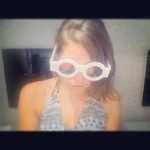

At the Kanaha Pond bird sanctuary...
January 7th, 2014, 8am
It was 18.9°C with few clouds. The breeze was light.
Dear Lorien,
Today is the first day back to school, from the holidays. Well, public school. We dropped off Lloyd’s hanai (adoptive) daughter Kulani, at King Kekaulike High School upcountry; his hanai son Pono is still in Lahaina town on the westside, hanging out with friends and cousins, enjoying his holiday to the last drop. He goes back to school tomorrow, at Kamehameha Schools Maui (a private school for students of Hawaiian ancestry, about which more later in this sojourn).
After dropping Kulani off, we drove down to town and to one of Lloyd’s favorite places to meditate, the Kanaha Pond Bird Sanctuary, which is in Kahului, the main town here on Maui—it’s probably the only ‘major’ city in the US which has its own extensive bird sanctuary, for rare and endangered bird species.
There’s a sign along the pond’s walkway which says this:
Naturally occurring freshwater marshes, ponds, and other wetlands may have always been in short supply on the Hawaiian islands. Wetlands such as fishponds and taro fields were created by the early Hawaiians, and wetland birds utilized these habitats. But in recent history, many wetlands were filled for land development or degraded by agricultural practices. Many remaining wetlands are vulnerable to water diversions, pollution, and invasive species.
And indeed, there has been talk around here of “developing” this marsh and pond area and building a health services clinic. While that is generally a good thing (for people), it would of course be devastating to the wild animals and creatures for whom this pond is a home and habitat.
The informational sign goes on to describe the pond’s inhabitants:
Today, five native waterbirds breed on most of the main Hawaiian islands. The Hawaiian coot (‘alae ke’oke’o), common moorhen (‘alae ula), black-necked stilt (ae’o), and Hawaiian duck (koloa) are in serious trouble and have been listed as endangered. These waterbirds nest on the ground, making them vulnerable to introduced predators such as mongooses, dogs, cats and rats. The tree-nesting black-crowned night heron (‘auku’u) is holding its own.
I saw some of these beautiful birds here this morning, their resonant calls winging and echoing across the pond’s surface as they foraged for food.
A number of waterfowl and shorebirds over-winter in Hawai’i or pass through on their annual migrations. The best known and most commonly seen in grassy fields is the Pacific golden-plover (kōlea). Individual birds return to the same areas every year. Along the shoreline, ruddy turnstones (‘akekeke), wandering tattlers (‘ūlili), and sanderlings (hunakai) are a common winter sight.
Every town, city and village should have its own little spot of wilderness for our fellow creatures, don’t you think?
your friend,
Flat Stanley
Other moments in Kahului
-
Aloha,I am a child of God and was born on July 10, 1979 in Wailuku, Maui at Maui Memorial Hospital.
in Kahului, United States -
Catching the stillness before the storm at the perfect place and time to do so...
in Kahului, United States -
once upon a time, with gills
in Kahului, United States -
Memories
It was ten years ago...
in Kahului, United States -
This red earth, at dusk...
in Kahului, United States -
Prose, Thoughts
The word...
in Kahului, United States -
sunset
At the Whole Foods parking lot, sunrise, caneburning smoke; I looked down and saw, yes, Sanna, adularescence. :-)
in Kahului, United States -
Dusk, Dusk
Stopped by the airport runway at dusk ... Sanna's word is in there somewhere. ;-)
in Kahului, United States -
Epic Views
Haleakala in darkening blue; or, who would be so crazy as to leave this place? Oh... the young.
in Kahului, United States


